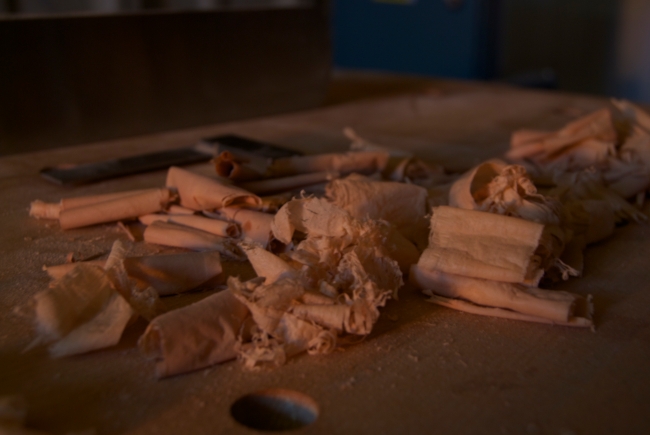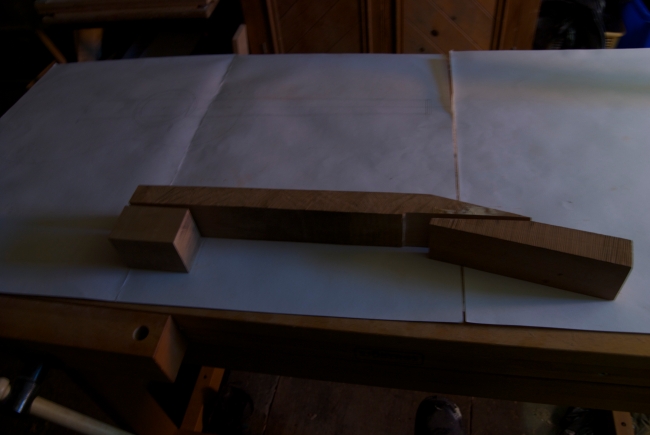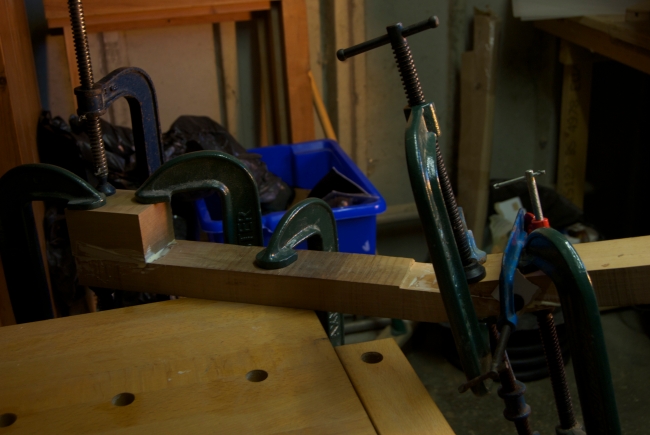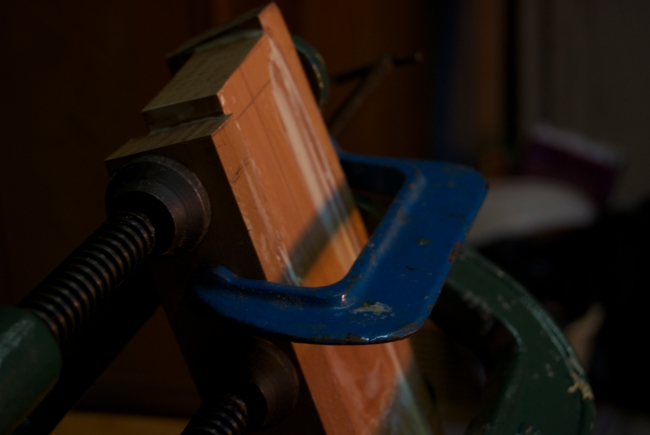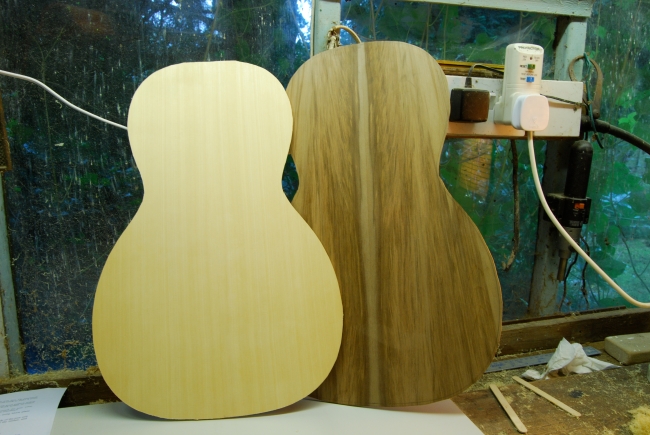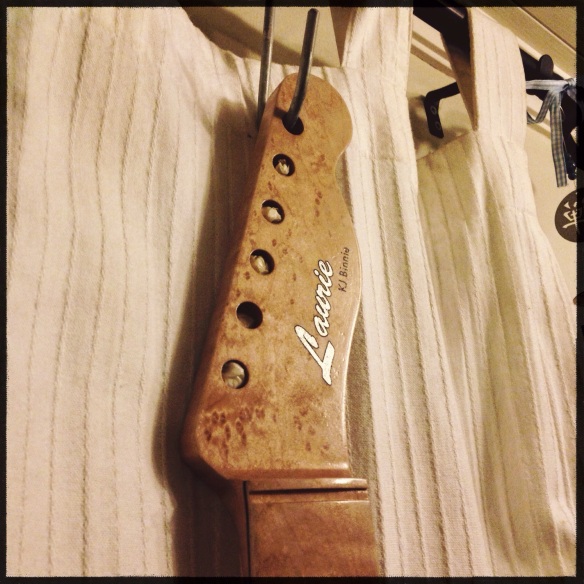I ended my last post by discussing the parlour guitar build, and it is the neck of this guitar which I want to write about today. As I mentioned in my last post, timber selection for the neck has very little bearing on the overall tone of a guitar, and instead the primary concern is to have a stable neck which is strong enough not to bow under string tension. Providing that any potential neck timber is straight grained, strong, and stable, the final selection can be made on the basis as to what best suits the appearance of the guitar. This is why despite having used mahogany and maple on previous necks, I chose steamed pear for the parlour guitar as it matched the American red gum back and ribs best.
Rather than using a one piece neck as I did on Esmerelda (where the entire neck is cut out of a larger piece of timber, including the headstock and heel block), for the parlour I decided to block up the neck from a single board.
There are two advantages to this approach, firstly the neck can be made from a single 2″ thick board as the heel block and headstock of built up from lengths of the board which are cut off and then glued back on, where as a one piece neck is carved out of a 4″ thick board which generates a lot of waste. Secondly, the transition from neck to headstock is much stronger in a three piece board. This is because the headstock angle on a three piece neck is achieved by rotating an off cut through 180 degrees and using a scarf joint. This puts a strong glue line directly under the nut of the guitar, which is where a great deal of the string tension acts. In comparison, a one piece neck has a lot of short grain under the nut, and consequently is weakest directly at the point where most of the string tension acts against the neck. Anecdotal evidence from professional luthiers who carry out repair work shows that reattaching headstocks to Gibson style one piece necks is a constant way of life – Brook Guitars‘ blog seems to feature at least one Gibson headstock repair every month!
First off I transferred the 13 degree angle for the headstock from my drawing to the board. The resulting short offcut was then flipped upside down to form the corresponding half of the scarf joint. The heel block was similarly built up with a 3″ long section cut from the end of the board, with the three pieces laid out as shown in the below photo.
The gluing surfaces were cleaned up with my Clifton No.5 jack plane, and tweaked with the block plane where needed, before being glued with Titebond and clamped to set. This steamed pear works really well – it is hard, but cuts cleanly and produces beautiful thin shavings.
Once the main assembly had been glued up, the final step was to glue “ears” to establish the necessary width for the top corners of the classic paddle shaped headstock.

